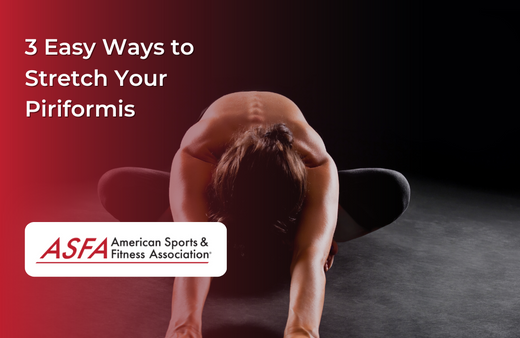The piriformis muscle, located deep within your buttocks, plays a crucial role in hip movement and stability. When this muscle becomes tight or irritated, it can lead to discomfort, pain, and even sciatic nerve issues. Stretching the piriformis muscle can provide relief and prevent these problems. In this guide, we'll explore the anatomy of the piriformis muscle, the benefits of stretching it, and three easy ways to incorporate piriformis stretches into your routine.
Understanding the Piriformis Muscle
The piriformis muscle is a small, pear-shaped muscle located deep within the gluteal region, beneath the gluteus maximus. It originates from the sacrum (the triangular bone at the base of the spine) and attaches to the upper part of the femur (thigh bone). Despite its size, the piriformis muscle plays a significant role in hip rotation and stability.
Benefits of Stretching the Piriformis Muscle
Stretching the piriformis muscle offers several benefits:
- Pain Relief: Stretching can alleviate discomfort and pain associated with a tight piriformis, including sciatica symptoms.
- Improved Mobility: Stretching helps maintain or restore the muscle's flexibility, allowing for better hip movement and range of motion.
- Prevention: Regular stretching can prevent the piriformis muscle from becoming overly tight and causing issues.
- Reduced Risk of Sciatica: A relaxed piriformis muscle is less likely to compress the sciatic nerve, reducing the risk of sciatica.
Three Easy Ways to Stretch Your Piriformis Muscle
Incorporate these simple piriformis stretches into your daily routine to promote flexibility and relieve tension:
1. Seated Piriformis Stretch:
Instructions:
- Sit on the floor with your legs extended in front of you.
- Bend your right knee and place your right foot on the outside of your left knee.
- Keep your left leg extended.
- Place your left elbow on the outside of your right knee, gently applying pressure to deepen the stretch.
- Twist your torso to the right while looking over your right shoulder.
- You should feel a stretch in your right buttock.
- Hold for 20-30 seconds, then switch sides.
- Repeat 2-3 times on each side.
2. Supine Piriformis Stretch:
Instructions:
- Lie on your back with your knees bent and feet flat on the floor.
- Cross your right ankle over your left knee, creating a figure-four shape with your legs.
- Reach through the space between your legs and clasp your hands behind your left thigh.
- Gently pull your left thigh toward your chest, feeling the stretch in your right buttock.
- Hold for 20-30 seconds, then switch sides.
- Repeat 2-3 times on each side.
3. Standing Piriformis Stretch:
Instructions:
- Stand up straight with your feet hip-width apart.
- Cross your right ankle over your left knee.
- Bend your left knee and sit back as if you're going into a one-legged squat.
- Keep your chest upright and your back straight.
- You should feel a stretch in your right buttock.
- Hold for 20-30 seconds, then switch sides.
- Repeat 2-3 times on each side.
Tips for Effective Piriformis Stretching
- Warm Up: It's essential to warm up your muscles before stretching. Perform light aerobic exercises for 5-10 minutes to increase blood flow and prepare your muscles for stretching.
- Relax and Breathe: While stretching, focus on deep, slow breaths. Relax into the stretch and avoid tensing up.
- Consistency: To reap the full benefits of piriformis stretching, make it a regular part of your routine. Daily stretching can help maintain flexibility.
- Listen to Your Body: If you experience pain while stretching, ease off and avoid pushing too hard. Stretching should be comfortable, not painful.
- Consult a Professional: If you have chronic piriformis issues or severe pain, consider consulting a healthcare or physical therapy professional for guidance.
Stretching your piriformis muscle can be a simple yet effective way to alleviate discomfort, maintain mobility, and reduce the risk of sciatica. By incorporating these easy stretches into your daily routine and practicing consistency, you can keep your piriformis muscle in good health and enjoy improved hip function.





